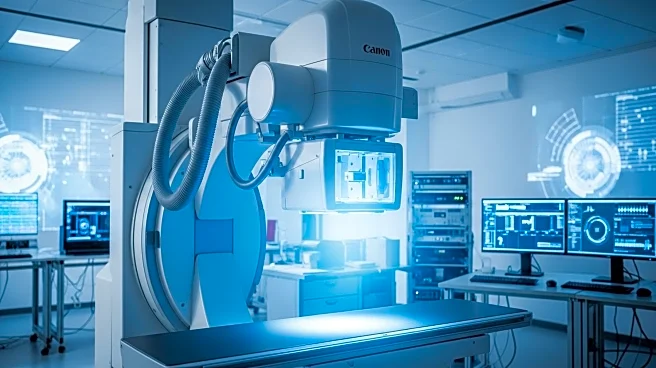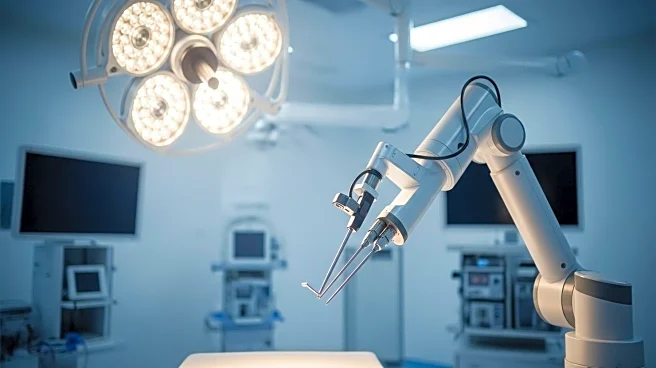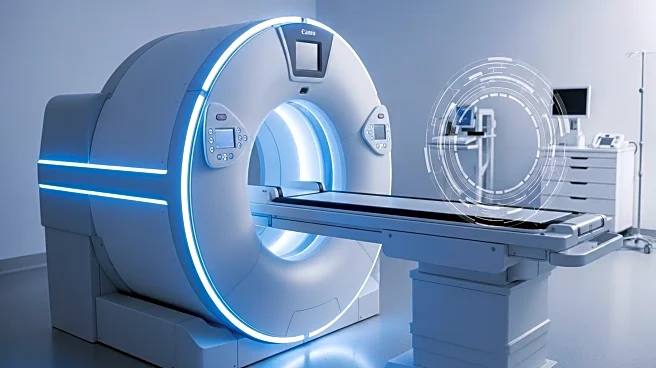What's Happening?
Researchers from Northwestern University and Soochow University have developed a perovskite-based detector capable of capturing individual gamma rays for SPECT imaging with unprecedented precision. This innovation promises to make nuclear medicine imaging sharper, faster, cheaper, and safer. The study, published in Nature Communications, highlights the potential of perovskite crystals, previously known for their role in solar energy, to revolutionize medical imaging. The new detector could lead to shorter scan times, clearer results, and lower radiation doses for patients. The technology is being commercialized by Actinia Inc., aiming to make high-quality imaging accessible to more hospitals and clinics.
Why It's Important?
The development of perovskite-based detectors represents a significant advancement in medical imaging technology. By offering a cheaper and more efficient alternative to existing detectors, this innovation could democratize access to high-quality nuclear medicine imaging, benefiting patients with faster and safer diagnostic procedures. The ability to produce clearer images with lower radiation exposure is crucial for improving patient care and outcomes. As the technology becomes more widespread, it could lead to better diagnoses and treatment plans, ultimately enhancing healthcare delivery.
What's Next?
Actinia Inc. is working to bring this technology from the lab to hospitals, collaborating with partners in the medical device field. The focus will be on refining the detectors, scaling up production, and exploring new directions in medical imaging. The widespread adoption of perovskite-based detectors could transform nuclear medicine imaging, making it more accessible and effective. Continued research and development will be essential to fully realize the potential of this technology and integrate it into next-generation imaging systems.
Beyond the Headlines
The use of perovskite crystals in medical imaging highlights the broader trend of applying materials science innovations to healthcare. This development could pave the way for further advancements in imaging technologies, potentially leading to new diagnostic tools and techniques. The ethical implications of making advanced imaging more accessible also warrant consideration, as it could shift healthcare dynamics and improve equity in medical services.










